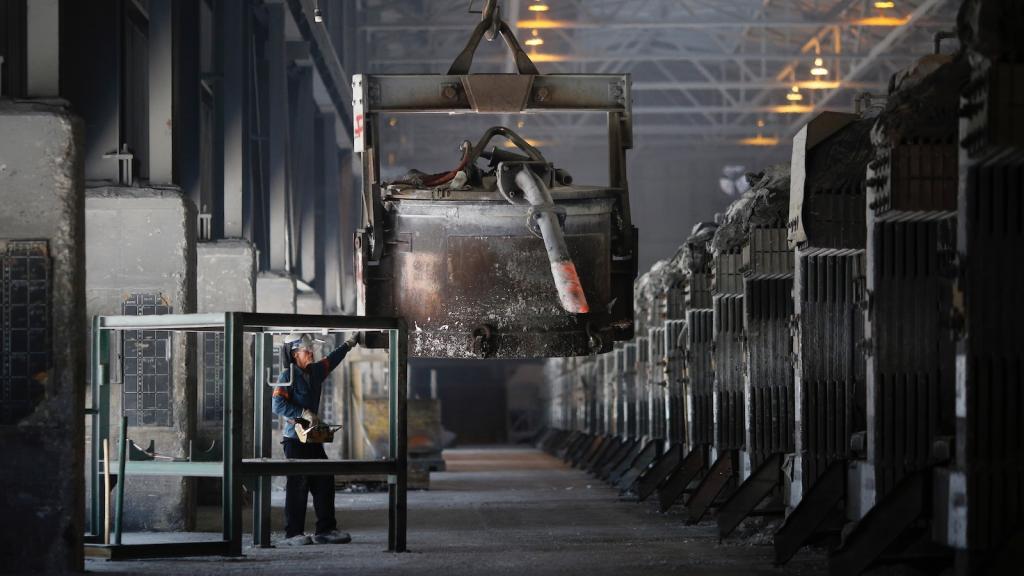This post is by ClimateProgress guest blogger Bill Becker, executive director of the Presidential Climate Action Project.
—–

When I was a child in the 1950s, I went about my business with a little cloud hanging over my head. It didn’t matter whether I was playing in the backyard, studying in my bedroom or suffering from my first romantic crush (Annette on the Mickey Mouse Club). The cloud was always there.
It was the fear of nuclear war. We lived in suburbs west of Chicago. All day long, jets flew overhead on their way to O’Hare International Airport, sometimes so high that they were just a silver spot gleaming in the sun as they moved across the sky. When I saw one, I stopped what I was doing and waited several minutes to see if a mushroom cloud appeared to the east over Chicago. Once I saw the mushroom, I knew from school, our neighborhood would be flattened a few seconds later.
It never happened, of course. I can’t say that the cloud ruined my childhood or followed me into adulthood, but its shadow came back to mind Friday night (Oct. 19) as I watched John Stossel’s latest “Give Me a Break” segment on ABC.
Stossel took on global warming again. He acknowledged that is real, but questioned whether it’s a crisis, whether it’s our fault, whether the polar bears actually are at risk and whether we should care. “Who’s to say that yesterday’s temperature is the perfect one?” he asked.
What I found most disturbing was his interview with a room full of small children, who spoke about people drowning and dying because of climate change. Stossel didn’t ask the very important follow-up question: “Hey, kids, what should we do about it?” The answers might have ended the interview on a constructive note and spoiled Stossel’s implication that talking about climate change is child abuse.
But there is a legitimate point to be made here. Is the public discussion of global warming leaving many of us — not just children — with feelings of despair and helplessness?
The “climate blues” is recognized internationally as one of the public health problems associated with global warming. In 1993, a study for the United Nations Environmental Program reported that the psychological stresses of climate change may “lead to dysfunctional responses”:
When people experience a widespread problem that they feel unable to do anything about, they often develop some sort of psychological defense. A problem as overwhelming as climate change is likely to generate such counterproductive responses as cynicism, denial, and aggression. When people respond to a desperate situation by becoming cynical, they lose their interest in the problem and withdraw from activities that might help to alleviate or solve it. When they deny that the problem exists, they deny having any responsibility for causing it; as a result, campaigns that, for example, encourage people to reduce greenhouse-gas emissions by driving their cars less would fall on deaf ears. Finally, if people try to vent their frustration through aggression, they may become destructive and seek to sabotage efforts to combat climate change.
The Washington Post reports that these stresses may be particularly difficult for the young:
For many children and young adults, global warming is the atomic bomb of today. Fears of an environmental crisis are defining their generation in ways that the Depression, World War II, Vietnam and the Cold War’s lingering “War Games” etched souls in the 20th Century.
Parents says they’re searching for productive outlets for their 8-year-olds’ obsessions with dying polar bears … Psychologists say they’re seeing an increasing number of young patients preoccupied by a climactic Armageddon.
How we discuss global warming with one another, with the public and with our children in ways that mobilize us for action rather than immobilize us from despair? The answer may lie in advice from Susan Joy Hassol, one of the nation’s primier climate communicators: “We need to stop being Chicken Little and start being The Little Engine That Could.”
Back in the 1950s, the danger of nuclear war was completely beyond our control. We could learn to duck and cover, or dig a hold in the ground and stock it with canned goods, but our fate was sealed in a black box that moved around with the president of the United States.
Climate change is different. Each of us has a measure of power for change, from voting for the right person to screwing in a compact fluorescent bulb. If we are not helpless, we do not need to feel hopeless.
As Stossel acknowledges, most Americans now accept the science and seriousness of global warming. It’s time to move the national discussion beyond the disaster that confronts us if we don’t act, to the excellent world that awaits us if we do.
Next time you’re talking to a child about climate change, tell him or her we’re building a world where the air is cleaner; people are healthier; there are no more oil wars; we have forests in our cities; our buildings are more beautiful; we have lots of ways to move around; we’re free from energy crises; and people and ecosystems have learned to live together.
We all know the nightmare. Now we need a dream.
This post was created for ClimateProgress.org, a project of the Center for American Progress Action Fund.


